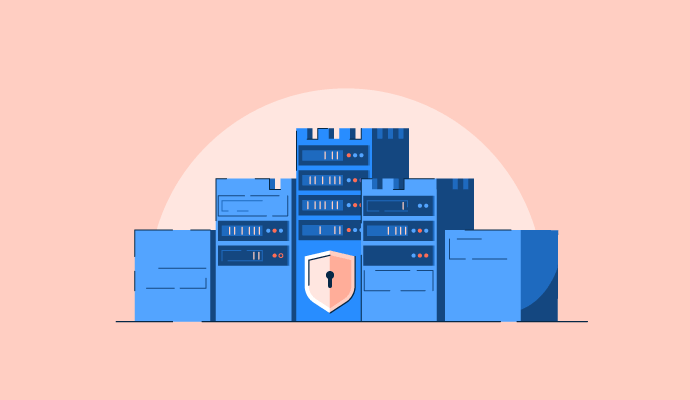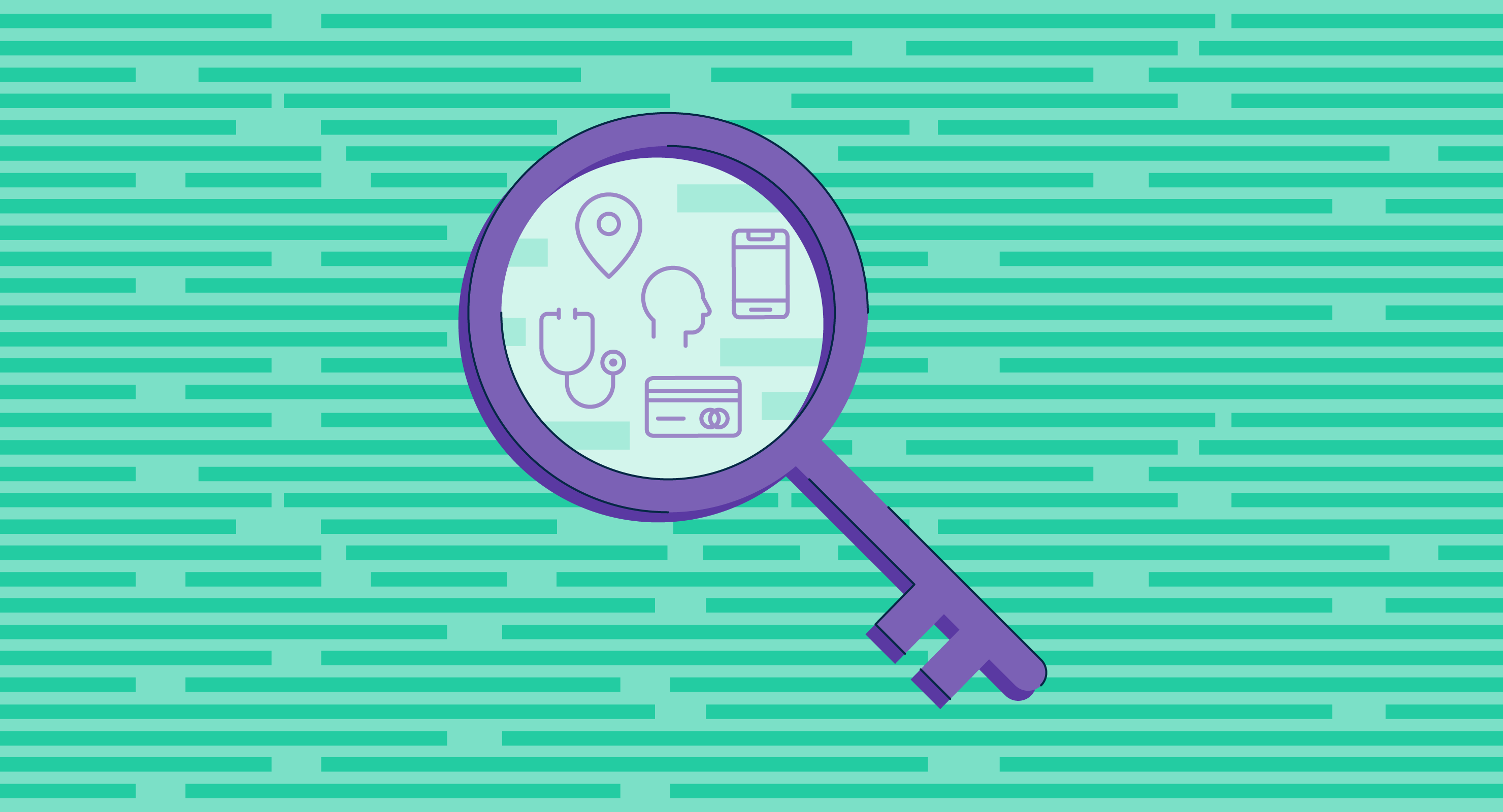Cyber attacks steal data and cost victims millions of dollars in penalties. It can even devastate an organization’s reputation. Cybersecurity protocols and practices help companies defend sensitive information against these kinds of attacks.
Businesses have to safeguard their data against unauthorized access, from inside and outside the company. Strong cybersecurity reduces the possibility that a cyber attack might affect corporate operations and prevents hackers from accessing electronic data stored on websites, networks, or devices.
Encryption software is a good tool for companies trying to hide sensitive data and stop criminals from exploiting it. Let’s explore some of the latest cybersecurity trends and learn more about how organizations face them.
Types of cybersecurity statistics
Cybersecurity management refers to an organization's strategic information resource protection efforts. It focuses on how businesses safeguard their computer systems with security tools and IT solutions. Discover the most recent cybersecurity trends currently influencing the IT sector through these stats.
- According to Cybersecurity Ventures, between 2021 and 2025, spending on cybersecurity products and services will climb to $1.75 trillion due to an increase in cybercrime and tactics to prevent attacks.
- In August 2021, Google pledged to commit $10 billion by 2025 to enhance cybersecurity. This funding will concentrate on developing zero trust programs, open-source security, and the software supply chain.
- The US House Appropriations Committee released funding bills in June 2022, including $15.6 billion for federal cybersecurity efforts.
- The cost of cybercrime accounts for 1% of the global gross domestic product (GDP).
- A malware attack often costs a business over $2.5 million, not counting the time it takes to stop it.
- In 2021, ransomware was 57 times more harmful than in 2015.
- The cost of tackling a data breach increased from $3.86 million to $4.24 million in 2021, the highest average overall cost in the report's 17-year history.
- Zero trust security procedures reduced the cost of data breaches by $1.76 million in 2021.
- On average, businesses reported 130 security lapses per organization each year.
- Annually, cybercrimes affect 71.1 million people worldwide.
- When remote employment contributed to a breach, it was found that the average cost to manage it was $1.07 million greater than when remote work wasn’t a factor.
- The managed services for advanced persistent threat (APT) protection market will dominate the industry globally and bring in almost $11 million in revenue.
- The market for APT protection in the Asia-Pacific region had sales of over $1.1 million in 2019 and is projected to reach approximately $5.3 million in revenue by 2027.
Cyber attack statistics
Even though cyber attacks are increasing, most businesses believe they lack the resources necessary to counter the dangers. The majority of users continue to exhibit risky behavior and lack adequate education.
Read this summary of the key figures 2023 to get a fair idea of the hazard to be aware of.
- Ransomware-related breaches increased by 41% over 2022, and it took 49 days longer than usual to find and stop them.
- In the event of a data breach, 56% of Americans are unsure what to do.
- According to 75% of respondents, the most frequent causes of security incidents are credential theft, ransomware, distributed denial of service (DDoS), and lost or stolen equipment.
0.05%
of cybercriminals will be found and brought to justice in the United States.
Source: World Economic Forum
- Since the start of the Russia-Ukraine war in February 2022, the threat of cyber attacks has grown by 16% globally.
- Threats of exfiltrated data leakage are present in 86% of ransomware situations.
- Hackers conduct an attack every three seconds, or 26,000 times, a day.
- The average ransomware payment rose to $570,000 in 2021, up 82% from the previous year.
- A 50% surge in global internet traffic is attributed to lockdowns and remote work, creating new potential for cybercriminals.
Trends in expenses related to cybersecurity
Cybersecurity is an evolving area. The threat landscape keeps on changing with new attacks emerging frequently. Organizations should plan their cybersecurity budgets and resources to deal with the ever-changing threat landscape. Look at these trends to see how your business budget compares with the actual resources needed to combat cybercrime.
- In 2021, 47% of organizations intended to increase their spending on cybersecurity.
- The actions needed to address security problems were "difficult and expensive," according to more than 30% of CEOs.
- Spending on cybersecurity is defensive rather than innovative, with 77% going towards risk and compliance rather than opportunity. The two leading explanations are risk minimization (cited by 42% of respondents) and compliance or regulatory obligations (cited by 18%).
- Only 5% or less of the average cybersecurity budget is spent on innovative initiatives.
19%
of businesses claim to take cybersecurity into account when preparing new initiatives.
Source: EY
- More than half of organizations (53%) allocate more money to operations than cybersecurity.
- Less than a quarter of 43% of cybersecurity budgets are allocated to capital projects and long-term investments.
- Global ransomware damage costs exceeded $20 billion in 2021.
- In 2021, $1.86 billion was lost due to compromised personal and commercial email accounts.
- The typical ransom demanded by medium-sized businesses is $170,404.
Device and platform security statistics
Cyber attacks have long targeted desktop and laptop computers. More recently, many new attack vectors are emerging in the internet of Things (IoT) devices and other gadgets. Double check devices and platforms that are a common target for threat actors.
- Mobile platforms are used for 70% of online fraud.
- On average, 82 malicious mobile apps are found each day; they cause 20% of hacks.
- About half of American gamers (51%) are brave enough to believe that their gaming accounts will never be hacked, and nearly three-quarters (73%) say they would never fall for a gaming scam.
- 62% of American gamers say they are concerned about the future security of their games.
- 15% of IoT attacks involved connected cameras, while 75% involved infected routers.
- IoT devices can be attacked in as little as five minutes.
- The way IoT devices gather information about people and their behaviors is considered "creepy" by 63% of people.
- 53% of people don’t trust IoT devices to protect their privacy or treat their information respectfully.
- 28% of those without smart devices said they wouldn't get one because of security issues.
- 11% of consumers have deactivated their social network accounts to safeguard their online privacy.
- 34% of American adults believe social media corporations are completely incapable of protecting their personal information.
- Every institution experiences an average of about 30 corporate social networking account takeover attempts annually.
Trends in security threats to industries
Recent cybercrime incidents show that scammers aren't just after user data. They’re also damaging hospitals, pipelines, meatpacking plants, and water supply centers. Bodily harm could result from these hacks.
- Cybersecurity programs are reportedly "fully functional" in 16% of healthcare organizations.
- 25% of healthcare organizations admit they don’t encrypt patient data when using the public cloud.
- In 2016, 88% of all ransomware attacks in US companies targeted the healthcare sector.
- The majority (58%) of malware attack victims are small enterprises.
- 79% of bank’s Chief Information Security Officers (CISOs) claim that threat actors are using more complicated attacks.
- 31% of financial institutions reported a rise in fraud involving home equity loans.
- According to 79% of banks, frauds have advanced and are now using highly focused social engineering assaults.
- Lateral migration is involved in 70% of cybercrimes against financial institutions.
- A rise of 47% in wire transfer fraud was reported.
- More than any other sector, banks and other financial institutions are the targets of 25% of all malware attacks.
- The education sector ranks bottom for cybersecurity readiness out of 17 major businesses.
- 43% of students have experienced data breaches concerning exam and dissertation materials.
- Social engineering assaults were to blame for 41% of cybersecurity incidents and breaches in higher education.
Cybersecurity job statistics
IT and cybersecurity are two different lines of work; although they share common ground occasionally, their focus is distinct. Cybersecurity professionals are more focused on defining and implementing security standards to safeguard digital information. Let’s explore the growth opportunities in the cybersecurity industry through a statistical lens.
- Cybersecurity employs less than 2% of all IT personnel in businesses.
- 55% of the businesses polled said they considered offering employee training to strengthen their cybersecurity program.
- A security engineer makes, on average, $88,000 a year in the US while earning £52,500 ($72,000) per year in the UK.
- More than 60% of companies think the available cybersecurity candidates are unqualified.
- Due to GDPR laws, demand for data protect officers has surged by more than 700%.
- 3 job titles most sought after by US businesses in 2021 were cybersecurity analyst, cybersecurity manager, and cybersecurity consultant.
- From 2013 to 2021, open web security roles climbed by 350%.
- By 2031, the BLS projects that demand will have grown by almost 35 percent, adding 56,500 new jobs.
- Cybersecurity professionals earned an average of $113,270 annually in 2021, 5% more than the previous year.
- In a poll conducted in 2021, 60% of the organizations said they had trouble keeping talented cybersecurity personnel.
- The lack of qualified cybersecurity workers worldwide resulted in over 1.8 million open positions in 2022.
Sources:
Get better (security) posture
Threat actors are looking for vulnerabilities they can exploit. The more weak spots you have, the easier it is for attackers to take undue advantage . Fortify your defenses and implement patches regularly to avoid facing reputational damage or financial losses.
Use these statistics to identify trends and train employees on relevant security software. Keep your strategies up to date to protect against cybercrime.
Learn more about the different security software tools you can use to maintain a robust security posture.

Sagar Joshi
Sagar Joshi is a former content marketing specialist at G2 in India. He is an engineer with a keen interest in data analytics and cybersecurity. He writes about topics related to them. You can find him reading books, learning a new language, or playing pool in his free time.

